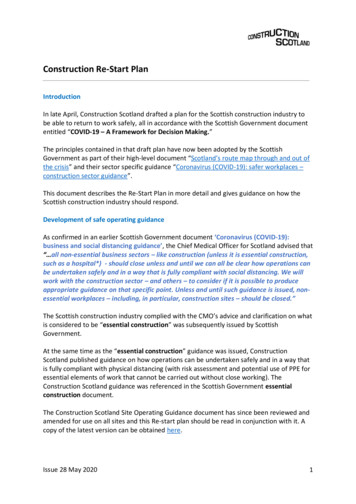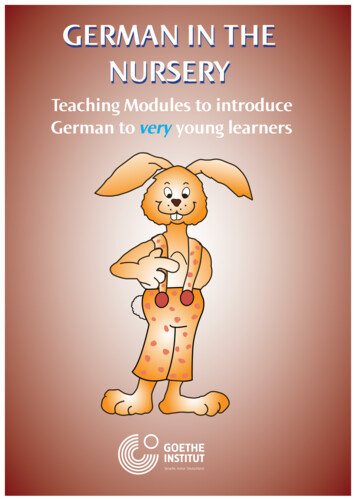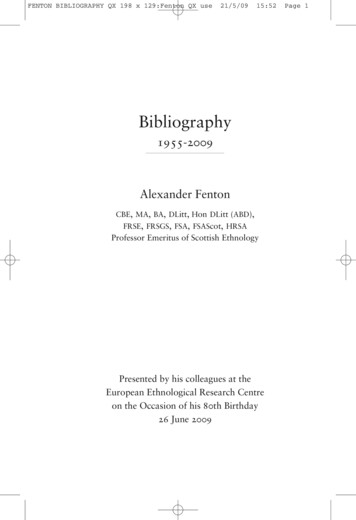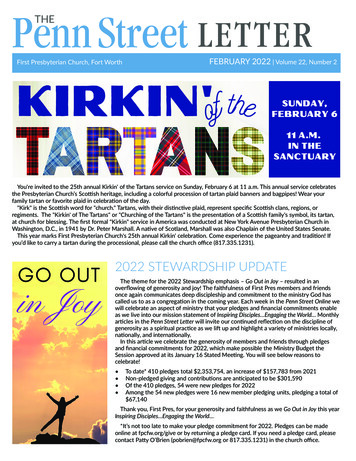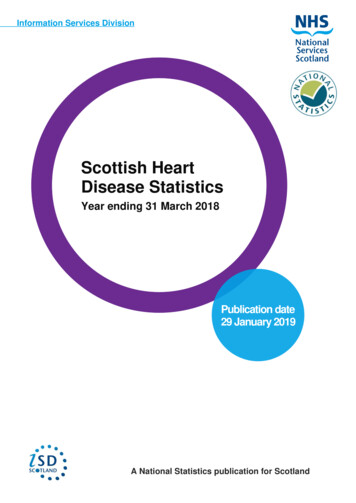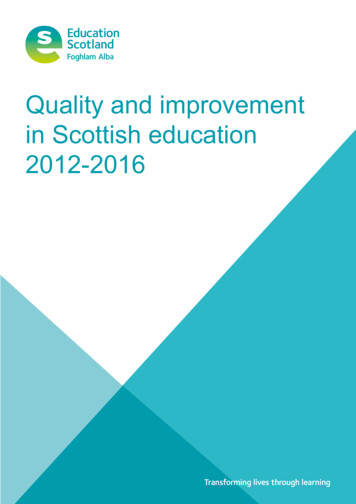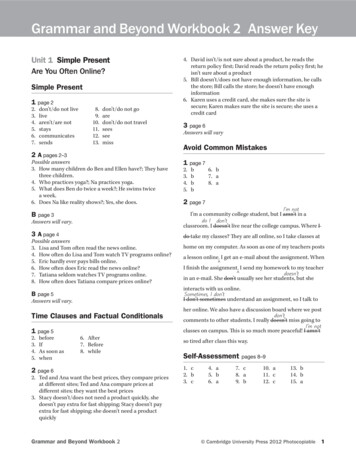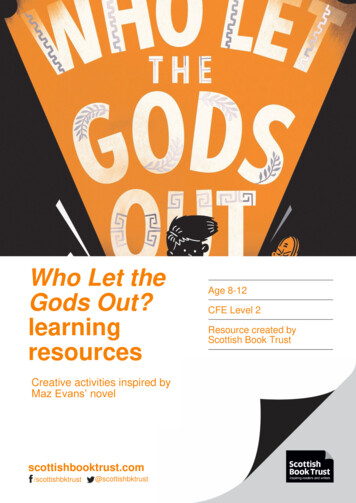
Transcription
Who Let theGods Out?learningresourcesAge 8-12CFE Level 2Resource created byScottish Book TrustCreative activities inspired byMaz Evans’ hbktrust1
ContentsRetell your own Greek myths2Olympian family tree2The Daily Argus3Create a comic book scene4About this resourceThis resource is full of cross-curricular activities inspired by Maz Evans’ novel WhoLet the Gods Out?Introducing Who Let the Gods OutThings are not going well for Elliot; his mum is ill and his family farm is under threatof repossession. So when Virgo, a fast talking Zodiac constellation falls from the skyand destroys the cowshed he is not immediately thrilled. Things get even worsewhen he accidentally helps to release Thanatos, a powerful daemon set on takingover the world. Elliot and Virgo enlist the help of the Gods, but after centuries ofcushy retirement on earth, are Zeus and his crew up to the task of saving the world –and helping to solve Elliot’s problems too?Maz Evans’ novel is packed with adventure and imagination. A gripping story wherethe mortal and immortal worlds collide, this book will ignite your pupils’ curiosityabout Greek Mythology and will keep them hooked until the very last page.1
Retell your own Greek MythsLIT 2-01a, LIT 2-04a, LIT 2-05a, LIT 2-06a, LIT 2-20a, ENG 2-27a, ENG 2-31aThe Ancient Greeks told wonderful stories about their many gods, heroes andmythical creatures. These stories were a means for people to explain the worldaround them and the natural phenomenon which they encountered.Play your class one of the Greek Myths from this series of BBC radio plays and thenask them to re-tell the myth from the first person point of view, assuming the identityof a character in the story.In Who Let the Gods Out, Maz Evans incorporates ancient Greek mythology into ourcontemporary world. Your pupils could try and do the same with one of the myths inthis series, updating the story to a modern setting. Or they could have a go atinventing their own myths to explain natural phenomena such as an earthquake or athunder storm.Activity extension: recording a podcastENG 2-27a, ENG 2-31a, TCH 2-04bOnce pupils have created their own myths you can record them as a class podcastor a radio play- you could continue the BBC series and add more myths to theseries.The basic equipment you need to record a podcast are a computer with recordingability (an internal or external microphone) and some recording software.Audacity is a free piece of audio software which you can use to record and edittracks and then export them as MP3 files.Alternatively, pupils could use their phones or an iPad to record and edit audio.Once your pupils have recorded their podcasts you could upload them to your schoolwebsite or to hosting sites such as the ones below: Libsyn Soundcloud TuneInFor a useful guide to making, recording and uploading podcasts you can look at thisguide for podcast beginners.Olympian family treeLIT 2-14a, LIT 2-15a, EXA 2-02a, SOC 2-01a, SOC 2-06aThe Greeks believed that their gods and goddesses presided over all aspects ofhuman life and each had their own power and personality. To give your pupils an2
overview of the Greek gods and goddesses, their powers and relationships, yourclass can create an Olympian family tree to display in your classroom.Divide pupils into small groups and assign each group a Greek god or goddess toresearch for the family tree. The British Museum has a great website with artefactsfrom ancient Greece and the stories they depict which your pupils can use as astarting point for their research.Using their research each group can create a “fact file” poster with an illustration oftheir God and the following information:Name:God of:Symbol:Festivals:Interesting facts and distinguishing features:Once pupils have completed their posters you can display them in the classroom asa family tree. Ask pupils to help put the gods in the correct order and discuss therelationships and stories of the gods as you go.A fun example of a Greek God family tree can be seen here.The Daily ArgusLIT 2-01a, LIT 2-28a, TCH 2-03a, TCH 2-04bIn this activity your pupils will record a news broadcast for The Daily Argus imaginingthey are a news team investigating reported sightings of Thanatos.To begin with your class can read Chapter 11 of Who Let the Gods Out whereThanatos travels to Tartarus, the prison of the Titans. On this journey Thanatosmeets a few interesting characters: Charon the ferryman; Cerberus the three-headedhound; Sisyphus, condemned to an eternity of rolling an immense boulder up a hillonly to see it roll back down; and Tantalus, sentenced to eternal hunger and thirst inTartarus. Each of these characters has seen Thanatos and will have a differentaccount of his return, it is the news team’s job to piece together the story.Split pupils into small groups and ask them to consider what makes up a newsreport, for example: An anchor’s introduction from the newsroom. An on the scene reporter. An interview with eye witnesses An expert’s account for example from a police detective.3
To help pupils understand the structure of a news report you could show the classsome clips from BBC Newsround and ask them to think the different aspects of thebroadcast.Ask pupils to look back through Chapter 11 to decide which characters they wouldlike to interview and what information they want to include in their report. They canthen allocate roles, plan and script their report.The BBC has some great tips and resources on how to plan and structure a newsreport: How to make a video news reportSchool News ReportTips for smartphone filmingOnce the pupils have created and compiled their news reports it is time to getfilming!Create a comic book sceneLIT 2-16a, ENG 2-31a, ENG 2-19a, EXA 2-02a, EXA 2-03aAdapting a scene from a book into a comic is a great way to get pupils thinking aboutthe writer’s craft and to explore key themes and ideas from the story.The format of comics will probably already be familiar to your pupils and some ofthem might already be comic book fans. Start off by bringing different comic stripsinto class and giving pupils time to read them.A brilliant resource for funny and accessible child-friendly comics is The PhoenixComic, a weekly comic for 6-12 year olds.Talk to your pupils about the similarities and differences between different comicsand artist’s styles. Some ideas to discuss: Is there dialogue? How is it presented? Are there speech bubbles orcaptions? What are the characters doing? How is that shown? What is the shape of the comic frames? Do they look like a box? Are thecorners rounded? Why do you think the illustrator made that choice? How is action, like movement, shown? What happens from one frame to the next?4
Scottish Book Trust has a brilliant resources from graphic novel artists Metaphrogdescribe how to adapt a scene from a novel into a comic. These can be found in thelearning resources section of the website. Pupils can choose a scene from Who Letthe Gods Out and then follow the activities in this resources to create their owncomic strip.If your pupils are less confident you can provide them with a simple layout sheet fortheir comic to help them get started. You can find lots of different printable layoutshere.5
about Greek Mythology and will keep them hooked until the very last page. 2 Retell your own Greek Myths LIT 2-01a, LIT 2-04a, LIT 2-05a, LIT 2-06a, LIT 2-20a, ENG 2-27a, ENG 2-31a . Audacity is a free piece of audio software which you can use to record and edit tracks and then export them as MP3 files.


